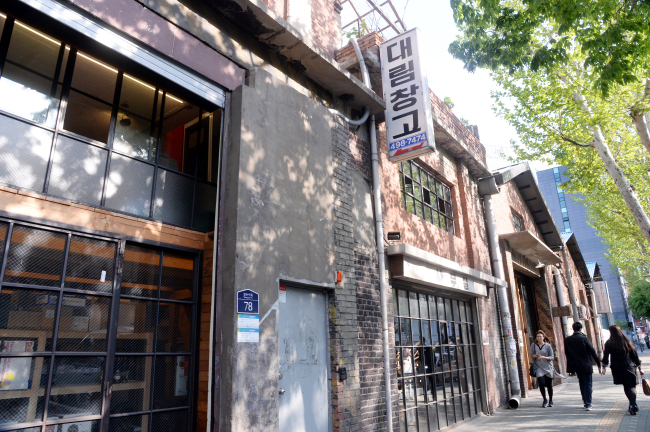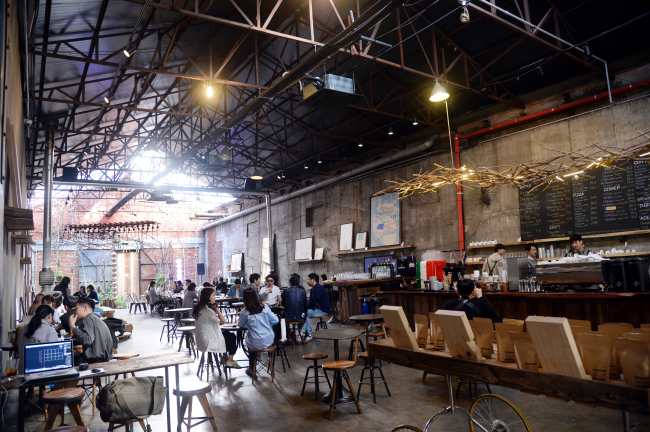The growth of coffee addicts is explosive, manifested in the rapid spread of coffee shops, big and small, across the nation. Latest data showed that Koreans consumed more than 25 billion cups of coffee last year, translating into a whopping 500 cups per person.
The stakes couldn’t be higher for both franchise coffee chains and smaller self-owned businesses. They are now rushing to diversify themes, offer special brews and explore new concepts.

Daelim Warehouse Cafe in Seongsu-dong, Seoul (Park Hyun-koo/ The Korea Herald)
The definition of a cafe in Korea is also expanding beyond the category of beverages. Harold Mollison, a 25-year-old Hong Kong-British traveler, found it amusing that a diverse range of entertainment establishments he saw on Seoul streets were all named cafes.
Chicken restaurants, gaming facilities, palm-reading shops and countless other businesses are all called cafes. This ubiquitous label implies that Koreans associate the word with entertainment away from home.
Ko Ji-won, a 25-year-old office worker, said she goes to cafes with friends because she does not want to bring them to her house where she lives with her parents. Inviting friends over would disturb her family.
“I think Koreans in general don’t have enough personal space to spend time with friends, which is partly why cafes have become so popular,” Ko said, “Cafes are the only option where I feel like I have the space to sit down and talk.”
To appeal to customers like Ko, a wide variety of cafes have been sprouting up, such as those related to comic books, board games and animals, among others.
Latest additions include cafes with virtual reality goggles, “escape room” cafes, where customers are voluntarily locked up and have to try to break free, and one-hour sleeping cafes furnished with beds.
The dizzying diversity marks a dramatic change in lifestyle.
In the 1970s, Koreans flocked to simple tea houses known as “dabang” for refreshments, music and socializing. The full-scale growth of the coffee industry here is largely due to the arrival of foreign coffee chains spearheaded by Starbucks Korea in 1999. The Seattle-based company maintains a dominant presence here. It reaped 1.03 trillion won ($ 908 million) in sales last year, a record for a coffee business in Korea.
Big coffee franchises are now seeking to offer high-end selections by launching separate premium brands. Prices for beverages at these specialty shops differ widely according to the grade of beans and how they are roasted and brewed.

Daelim Warehouse Cafe in Seongsu-dong, Seoul (Park Hyun-koo/ The Korea Herald)
Small cafes run by individuals are coming up with new concepts, experimenting with homegrown drinks and overhauling their interior design to retain loyal customers.
A district of Seongsu-dong, Seoul, is famous for a host of independent coffee shops that were renovated from rundown factories and warehouses. The shops display bare walls and industrial design as unique selling points. Of course, they also do not forget to discover new, tasty beans, a staple for many -- if not most -- Koreans addicted to coffee.
By Lim Jeong-yeo (
kaylalim@heraldcorp.com)







